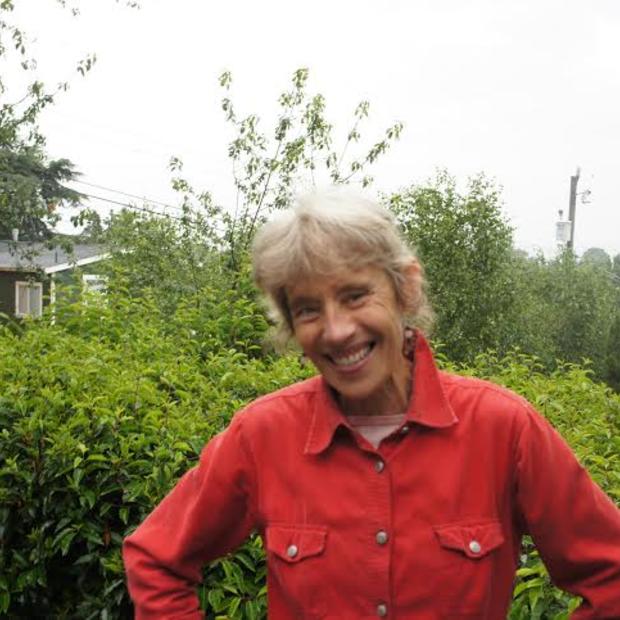Second of a two-part series.
Beaver ponds are probably not the first image you have of the Northgate Mall. But come to the Beaver Pond Natural Area just south of it and see what you’re missing — habitat restoration in the big city, with all the community and pitfalls that go with the territory.
Click on the audio player above or here to listen.
Every spring urban beavers come to a hidden park south of the Northgate Mall. They come to build dams. Most of the dams are appreciated by the humans they’re forced to co-exist with, but not all.
“As you see it’s right near the culvert here so Seattle Public Utilities has to take it out every time. But they’re moving around and I’m sure they’ll be moving into other natural areas as well.” Ruth Williams is a volunteer forest steward at the Beaver Pond Natural Area. Once called Park 6, the area has been transformed by beavers into a thriving wetland. The dams beavers build hold back water, making ponds that attract wildlife. The pond filters and cleans rainwater. Williams points to a large pile of branches in the middle of the pond. “That’s the lodge the right out there. Yeah, the beaver lodge. And then the main dam, the first dam, is right over here.”
Fellow volunteer Frank Backus says, “They’re really doing what the watershed needs, a way of holding back the water so it doesn’t go rushing down and cause flooding down below.”
This is the south fork of Thornton Creek. The city’s largest watershed drains land from southeast Shoreline and northeast Seattle into Lake Washington. For decades the creek ran under culverts, notably under the parking lot of Northgate Mall. But nature-loving activists with support from the city’s Green Seattle Partnership have slowly been daylighting parts of the buried creek and educating the public about stream health and tree cover.
“I love this volunteer idea," says Ellie Hale. "It’s a good way to build community.”
Hale steps back from a work party that involves hauling mulch from one side of the pond to the other. The mulch is spread over burlap bags after ivy and blackberry have been removed. “I’ve lived here for years and I only recently noticed there were beavers in the pond. I was thrilled.” Hale wasn’t thrilled to learn how many trees the beavers girdled and chewed, but hopes willows, recently planted by the city, will satisfy their appetite for awhile.
Willow is a favorite dish of beavers. Again volunteer forest steward Ruth Williams. “We feed the beavers and also if we have this kind of stuff for them to eat, the hope is we can get a stay of execution for our conifers." She laughs.
But beavers are not the trees' only problem in this very urban pocket. Follow a path across the road behind a giant Sequoia tree and you’ll come to a bus stop. Before volunteers began planting trees 15 years ago the area was nothing but construction fill. But neighbors say the shaded grove of cedars and Doug firs had become a refuge for drug use and alcohol.
Ian Cairns says, “Kids usually and teenagers will just hang out and it can just be uncomfortable as a neighbor to have that kind of activity there, especially when you’re trying to walk through and sometimes you feel physically threatened.” In December the trees were vandalized.
Someone clipped branches of an estimated 60 trees from as high as 10 feet to the ground. A neighbor saw the activity but to date no one has come forward with a name. “While we all enjoy the creek and wouldn’t want to damage it, most of us feel like it’s been positive. We feel it has lessened that activity back there.” The vandalism was a tough pill to swallow for Ruth Williams and other volunteers. “This sapling probably lost 40 percent of its foliage and it’s a young tree. I don’t know if it will survive that.”
The vandalism at Beaver Pond Natural Area has been a wake up call for forest stewards throughout the city to help the public understand the value of habitat restoration and listen when neighbors talk about crime. “There’s two different purposes at work here,” says Dewey Potter of Seattle Parks and Recreation. “One is to restore the site to its natural state and the other is to feel safe walking through the park.” Neighbors and volunteer forest stewards are still talking. At the restoration work party there was no shortage of helping hands. “Especially in an urban setting it’s difficult to find the balance between nature and people.” The balance is needed says volunteer and neighbor Heather Ferguson. “Nature is going to treat us as best we treat her so we really need to make sure we put a little love into her.”
Opinions vary on whether the 60 trees will survive the vandalism. But there’s no doubt urban habitat restoration will continue. There’s a lot to do.
To get involved at Thornton Creek or anywhere else in urban Seattle go to greenseattle.org.


